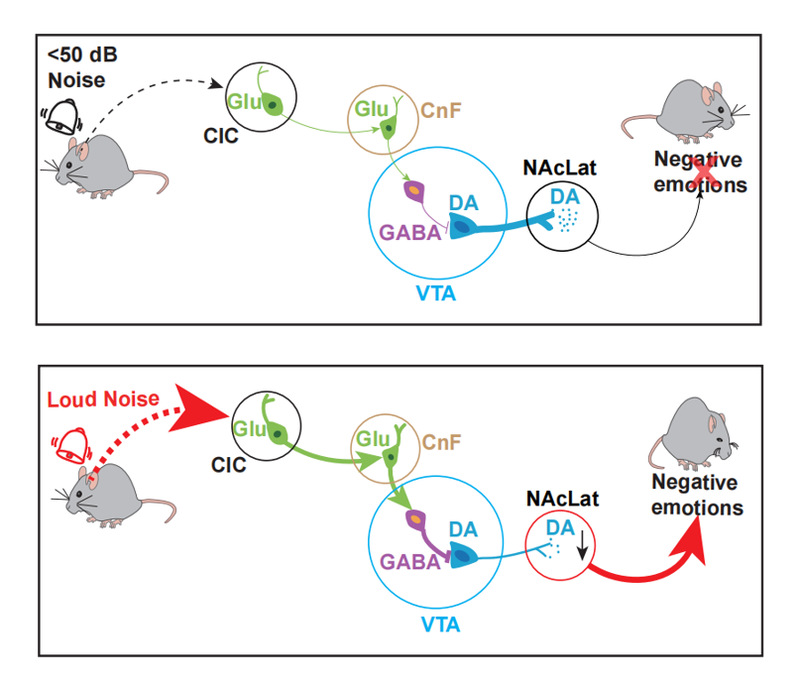The research team led by Dr. YANG Hongbin from the Zhejiang University School of Medicine has recently published an article titled “A midbrain circuit mechanism for noise-induced negative valence coding” in Nature Communications on May 17, 2025. This study revealed how noise affects emotional behaviors through a non-classical auditory pathway.
Unpleasant sounds can elicit a range of negative emotional reactions and even pain. The neural pathways that transform auditory stimuli into salient actions have been extensively studied, but the neural mechanisms that convert sounds into emotions remain unclear. In this study, the researchers discovered that glutamatergic neurons in the central inferior colliculus (CICglu) relay noise information to GABAergic neurons in the ventral tegmental area (VTAGABA) via the cuneiform nucleus (CnF), thereby encoding negative emotions in mice. In contrast, the canonical auditory pathway from the central inferior colliculus to the medial geniculate nucleus (CICglu→MG) is responsible for processing salient stimuli. By combining viral tracing, calcium imaging, and optrode recording, they demonstrated that the CnF acts downstream of CICglu to convey negative valence to the mesolimbic dopamine system by activating VTAGABA neurons. Optogenetic or chemogenetic inhibition of any connection within the CICglu→CnFglu → VTAGABA circuit, or direct excitation of the mesolimbic dopamine (DA) system, is sufficient to alleviate noise-induced negative emotion perception.

Research Model
Introduction to the research team:
Motivated behavior arises through approaching a reward or avoiding punishment. These behaviors control an animal's interactions with those goal objects in the environment that are important for the survival of the individual and the species. Many mental diseases (for example, depression and addiction etc.) are associated with dysfunction of the neuronal circuits of motivated behaviors. Hongbin Yang's group is dedicated to studying the neural basis mechanisms of motivated behavior. They use cutting-edge techniques, including imaging, electrophysiology (both in vitro and in vivo), molecular genetics, and optogenetics to understand how sensory inputs, arousal states, and motor systems make up the motivated behaviors.
Source: The research team led by Dr. YANG Hongbin